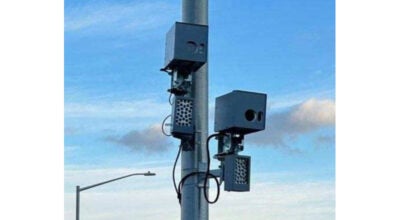Who is disenfranchised?
Published 10:40 am Wednesday, November 22, 2017
With three different recounts still to come in the Virginia House of Delegates elections that took place Nov. 7 and political control of that chamber in the balance — the Democrats need flip only one of those close elections to wrest control from the Republicans — it will be interesting to see whether the Democratic Party and its supposedly nonpartisan friends who have clamored for an end to political gerrymandering of Virginia’s legislative districts continue to pursue that goal.
Gerrymandering has long been considered one of the perks of holding the most seats in the legislature, and both parties have taken advantage of their power positions in the state legislature at various times in Virginia’s history to “ensure” that voters from the out-of-power party are marginalized in future elections.
But the 2017 election shows that sureties are far from certainties. The Republicans, who had a 66-34 voting advantage in the House prior to Nov. 7, blew the whole lead, putting Democrats within a close recount of splitting the body or even taking control. Clearly, national politics can trump even a gerrymandered election map.
But the results of this election demonstrate a striking feature of politics that has played out in elections from the local to the national level: Rural voters have little in common with their urban counterparts. And Democrats have learned to play that gap for all it’s worth.
Look, for example, at the differences between the makeup of the electorate that voted for both Democratic Governor-Elect Ralph Northam and his failed Republican challenger, Ed Gillespie. Of Northam’s voters, 74.1 percent were from urban and suburban precincts, according to the Virginia Public Access Project. Gillespie, on the other hand, polled 82.9 percent of his votes from rural and suburban precincts, garnering the vast majority of rural precincts — defined as fewer than 575 registered voters per square mile — around the commonwealth.
Rural precincts have almost no power when placed against their urban counterparts, defined as having more than 2,500 registered voters per square mile. Gillespie picked up just 17.1 percent of his votes from urban districts, compared to Northam’s 36.5 percent.
Put another way — and one that should raise alarms throughout the commonwealth — if Fairfax, Arlington and Alexandria were taken out of the mix, Northam’s nine-point margin over Gillespie would have been trimmed to about half a percent, a level that would have resulted in a legally mandated statewide recount.
The simple fact is that, for wide swaths of Virginia, statewide elections hardly matter any more. When Northern Virginia voters decide on their candidate, the only thing that stands between that candidate and the oath of office is voter turnout — and even that factor is weighted to Northern Virginia’s densely populated communities, which poll for Democrats by huge margins.
At the national level, this situation is exactly the one the Electoral College exists to balance. The Founding Fathers recognized that urban areas would have more electoral power than their much larger, but less populous rural sisters, so they set up the Electoral College to balance the power.
No such balance exists at the state level, though there’s an argument to be made that gerrymandering has had a similar effect in consequence, if not in intention. Virginia’s move from red to blue at the statewide level has been balanced by the gerrymandering that — until this year — has “assured” a state legislature that represents more than the interests of Northern Virginia.
Virginia Democrats can close the deal on flipping the state to the blue column if they succeed in taking control of the legislature. At that point, whether they continue with their crusade to end the practice or simply embrace it again and redistrict the commonwealth to ensure their own re-election efforts, it will be nearly impossible for the huge conservative sections of Virginia to have a voice in the state or national political arenas.
The charge against gerrymandering has always been that it disenfranchises voters. But if you’re a conservative looking at the election results compared to a map of the red and blue precincts across the commonwealth of Virginia — if you’re a Republican considering the voting power of three heavily Democratic municipalities in Northern Virginia — there’s a good chance that you’re feeling a bit disenfranchised yourself right about now.




